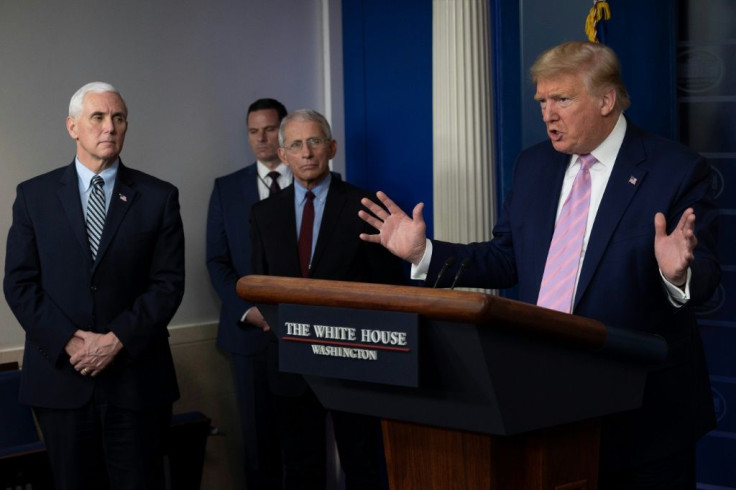430,000 People From China Entered US Since Coronavirus Detection, Some Directly From Wuhan

KEY POINTS
- 430,000 arrived U.S. on direct flights from China from Dec. 31, 2019, to Jan. 31, 2020
- Over 40,000 Chinese still entered the U.S. after Trump's travel ban on Jan. 31
- No travelers from China were screened for potential exposure to SARS-CoV-2 initially
The early restrictions on travelers to the United States from China that President Donald Trump brags about as proof to staunch the spread of COVID-19 was a failure, given the fact that more than 40,000 Chinese still entered the U.S. after the travel ban was announced on Jan. 31.
Trump imposed the ban one day after the World Health Organization (WHO) declared the outbreak a global health emergency. His order, however, exempted American citizens, green card holders, and their noncitizen relatives. Since Dec. 31, 2019, when Chinese officials disclosed the outbreak of a mysterious pneumonia-like illness to the world, more than 430,000 people arrived in the U.S. on direct flights from China.
Trump's proclamation of Jan. 31 barred the entry of non-U.S. citizens that had traveled to China within the last two weeks. Since then, the travel ban has been expanded to many other countries, including member countries of the European Union, Iran, Nigeria, Eritrea, Tanzania, Sudan, Kyrgyzstan, and Myanmar.
The world's first confirmed case of COVID-19 was detected Nov. 17, 2019, in Wuhan but this new case was passed-off as the flu by Chinese doctors.
An in-depth analysis by The New York Times reveals thousands of Chinese flew to the U.S. directly from Wuhan, the epicenter of China's COVID-19 outbreak after Trump announced his travel ban because American public health officials remained unaware of the true risks this new and highly infectious coronavirus presented to the U.S.
Reuters also found the Trump administration took a month from the time it learned of the outbreak in late December to impose the initial travel restrictions. It also said Trump was one of those not in favor of the travel ban.
On Jan. 22, Trump downplayed the threat posed by the coronavirus. “We have it totally under control," he boasted at the World Economic Forum (WEF) in Davos, Switzerland. It was the National Security Council (NSC) that wanted the ban on all incoming travelers from China. It took Trump a week to agree with them.
In total, the Times said 279 flights from China arrived in the U.S. since the Jan. 31 travel ban. Screening procedures at the U.S. airports designated to receive these incoming passengers were spotty and uneven. Many incoming Chinese said they weren't thoroughly screened and were hardly followed-up by medical workers.
“I was surprised at how lax the whole process was,” said Andrew Wu, who arrived on March 10 at LAX (Los Angeles International Airport) on a flight from Beijing. “The guy I spoke to read down a list of questions, and he didn’t seem interested in checking out anything.”
The New York Times report shows travel measures at the time, haphazard as they were, came too late to have "kept China out."
American infectious-disease experts now say the coronavirus spread was undetected for weeks after the first American case was confirmed on Jan. 21 in Washington State. No one knows when SARS-CoV-2 (severe acute respiratory syndrome coronavirus 2), the virus that causes COVID-19, first arrived in the U.S. from China.
The Times report also said no travelers from China were screened for potential exposure to SARS-CoV-2 during the first half of January. Health screening began in mid-January, but only for travelers that had been to Wuhan and only at airports in Los Angeles, San Francisco, and New York.
By that time, more than 4,000 people had already entered the U.S. directly from Wuhan, according to VariFlight, an information technology company specializing in civil aviation data services based in Hefei.
© Copyright IBTimes 2025. All rights reserved.





















